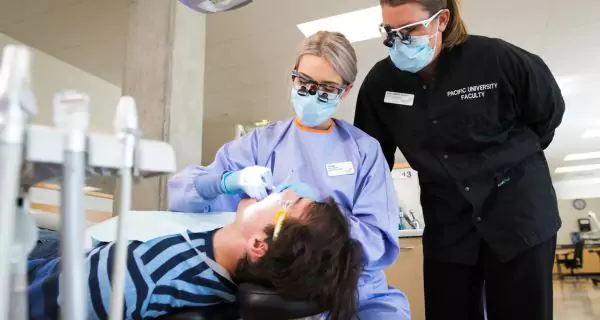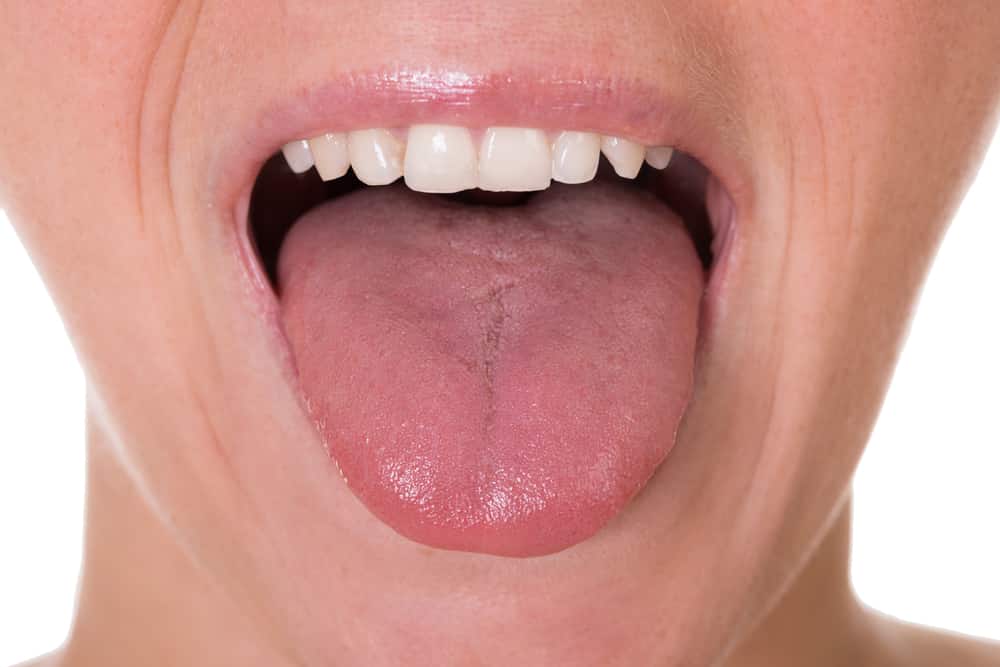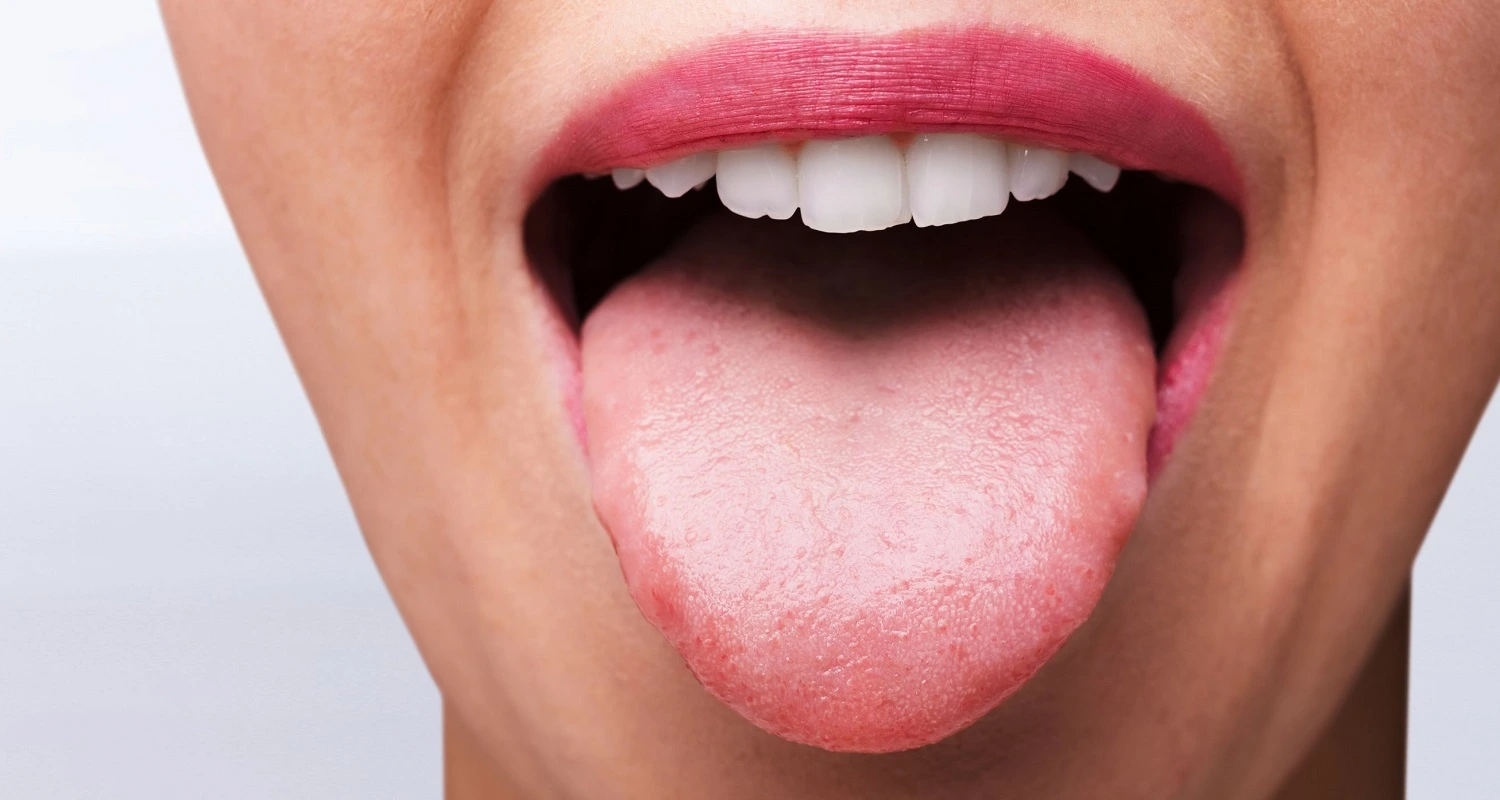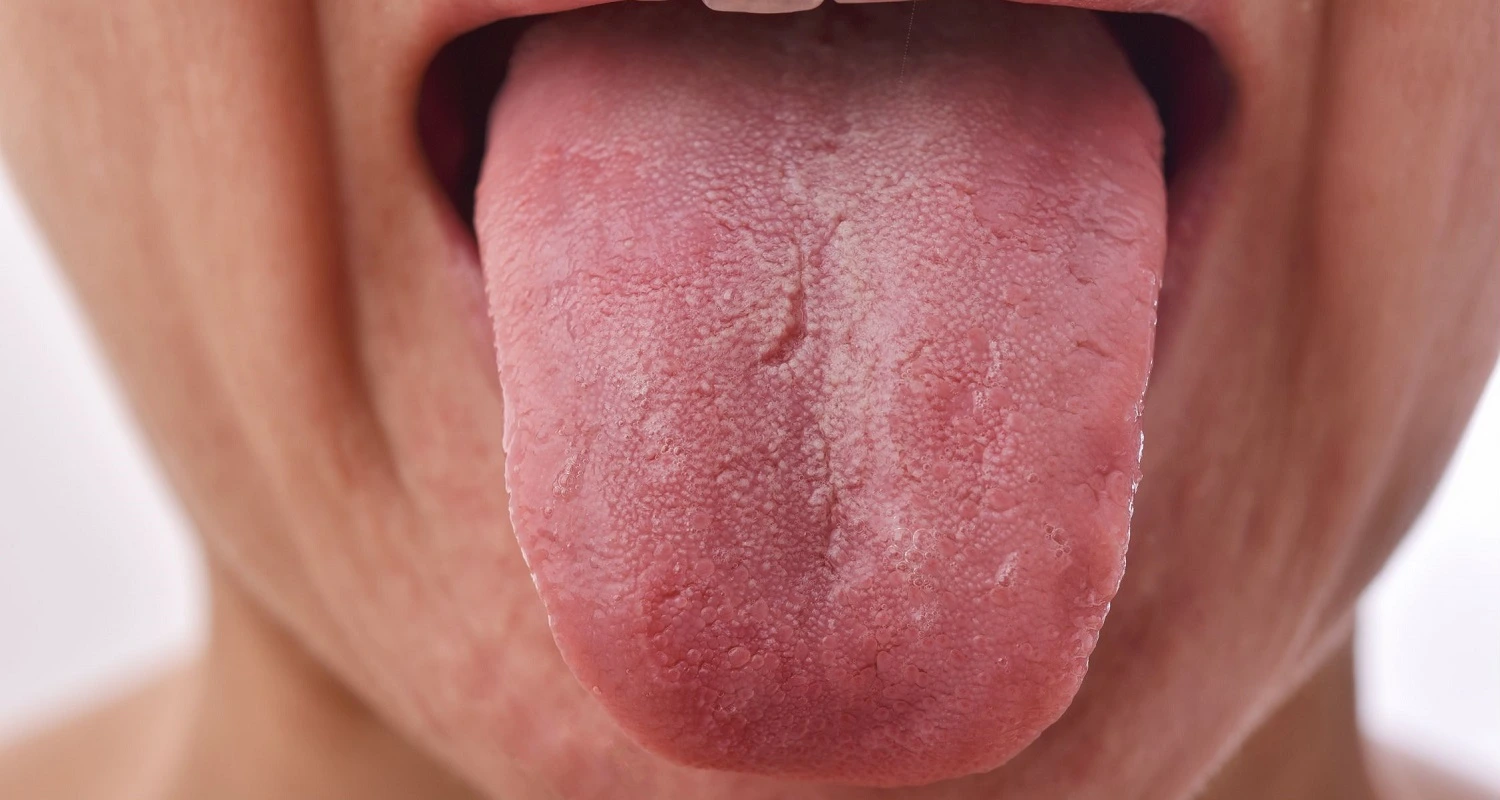Last Updated on: 19th September 2025, 12:51 pm
What is a healthy tongue? What affects the health of the tongue? Any change in the normal appearance or sudden pain in the tongue can be an indicator of a health problem, although there can be a range of changes with different results.
Stress, drug use, and infections are some of the causes that change the appearance of the tongue. What do these changes show?
Here you will find information about certain situations that generate changes in the tongue and what they warn as symptoms.
The tongue is a small organ that rests in the mouth to which little attention is paid, but it has an important function in well-being. Of course, the taste of food is perceived and its intake is facilitated by the tongue. It is also essential for the correct pronunciation of words. For this reason, it is important to know basic details about your oral health.
What does a Healthy Tongue look like?
A healthy tongue is pink in color and covered with small nodules on the bottom and top – the taste buds. In some people, it may show darker or lighter shades.
The bumps should cover a substantial portion of the upper surface, and the color of the pink can vary (as long as it’s not red). The underside of a healthy tongue also has these bumps however, they may be harder to see.
A consistent oral hygiene routine is the cornerstone of a healthy tongue and overall oral wellness. Brushing your teeth thoroughly, at least twice a day, using fluoride toothpaste is crucial. Equally important is paying attention to your tongue during your oral care routine. Gently brushing or using a tongue scraper helps eliminate bacteria and debris that can accumulate on the tongue’s surface, contributing to bad breath and potential health issues.
Remember to stay hydrated and maintain a balanced diet rich in fruits and vegetables to support tongue health. Regular dental check-ups complement your oral hygiene efforts, ensuring a vibrant and healthy tongue that plays a vital role in taste, speech, and digestion.
What does a Diseased Tongue look like?
One of the warning signs is a color change. Other signs may be pain when eating, drinking, or swallowing, and noticeable lumps or bumps.
A diseased tongue can present with various visual characteristics depending on the underlying condition. Common manifestations include discoloration, such as a white coating or patches, which might indicate oral thrush or leukoplakia. Conversely, a tongue that appears red and smooth could be a sign of glossitis, often associated with inflammation or infection. Another tongue condition is geographic tongue, which is an oral condition characterized by irregular, map-like patterns on the surface of the tongue.
Diseases of the Tongue
Several diseases can affect this organ of taste: white spots, red or black tones, and a hairy appearance. We will take a brief tour of these variations.
1. Tongue with creamy white patches
White patches with a creamy appearance can be the result of different conditions that affect the tongue:
• Candidiasis oral is an infection caused by fungi that grow inside the mouth. It generates white patches on the tongue and inside the cheeks that often display a creamy appearance. It is common in babies and older adults, especially people with dentures or people with a weak immune system. It also occurs in people with diabetes and patients taking steroids for asthma or lung disease. It may appear after taking antibiotic medicines.
• Another situation that affects the tongue is the excessive growth of cells in the mouth, known as leucoplasia. This unregulated cell growth generates white spots on the tongue and inside the mouth. It is common to see it in people who use tobacco and although not considered dangerous, it can be a precursor to cancer. If symptoms are observed that indicate the possibility of leukoplakia, a dentist should be consulted.
• Oral lichen planus is a disease that shows raised white lines on the tongue that give the appearance of lace. It usually goes away on its own.
2. Red tongue
This is a symptom that manifests a deficiency of vitamins such as vitamin B (folic acid) or vitamin B-12 (cobalamin). A blood test is necessary for the corresponding diagnosis. Some of the variants that show the red tongue are the following:
• The geographical tongue has a surface to a map of reddish spots. The patches may have white borders, and the location on the tongue may change over time. It is a harmless condition.
• Scarlet fever is an infection that gives the tongue a strawberry appearance (red and bumpy) and causes a high fever. It is a reason to consult the doctor and generally, it is treated with antibiotics.
• Kawasaki disease creates a strawberry-like tongue and causes a high fever. It is common in children under five years of age and requires a medical consultation. If not treated promptly, it can increase the risk of heart conditions.
3. Black hairy tongue
Taste buds grow throughout life, and in some people, an overgrowth makes them vulnerable to bacteria. When bacteria stored in the papillae grow, they can have a dark or black appearance. In addition, the overgrown papillae resemble hairs. Although it is not a common oral health condition, it is common in people who do not practice good oral hygiene habits.
People who have received treatment with antibiotics or chemotherapy, and those who have been diagnosed with diabetes, may have a tongue that appears black and hairy. Excessive consumption of coffee or the use of mouthwashes with antioxidant components can cause a black and hairy tongue. To learn more about treatments for a black tongue, you can check this article.
4. Tongue with bumps and pain
Painful lumps on the tongue can be caused by:
• Accidentally biting your tongue or consuming very hot food or drinks. This generates a burn, and the pain will pass when the tissue affected by the high temperature recovers. Another cause may be clenching the teeth (grinding), which irritates the tongue and causes pain.
• Smoke can irritate the tongue, accompanied by pain.
• Cold sores or ulcers can develop on the tongue at any time. Stress appearance. They usually heal without treatment in a week or two.
• A bump or sore that does not go away in an average time of two weeks could be an indication of oral cancer, and a health professional should be consulted. Many types of oral cancer are painless in the early stages, so a lack of pain does not mean there is no reason for concern.
Any discoloration, sores, or pain on the tongue that does not go away in an average of two weeks should be seen by a doctor.
Taking into account the different functions the tongue fulfills to preserve total well-being, one must be attentive to the changes registered in this organ of taste and speech, although not all of them are alarm signals. In the end, it is better to be proactive and not reactive to achieve a healthy tongue.
Frequently Asked Questions
How can you tell if your tongue is healthy?
A healthy tongue should have a rounded, symmetrical shape. It is typically light pink, though it may show some purple or brown pigmentation in African, Asian, and Mediterranean populations. A slight white coating can also be normal.
What is an example of an unhealthy tongue?
An unhealthy tongue might appear white, red, black, or yellow, and it may also be swollen and tender. While you might typically monitor your energy levels, skin, and blood pressure for health indicators, your tongue is an often overlooked but significant indicator of your overall health.
What does a bacterial tongue look like?
A bacterial tongue typically has a thick white coating. This coating can cover the entire surface of the tongue, just the back part, or appear in patches. Although it may look concerning, it is usually a sign of trapped bacteria, debris (such as food and sugar), or dead cells on your tongue.
What does tongue disease look like?
Tongue disease can present with various symptoms, including pain, enlargement or swelling, unusual texture, or abnormal colors such as white, yellow, brown, or black. Symptoms can be caused by infections, inflammation, and conditions either congenital or developed later in life.
When should I be concerned about my tongue?
While most spots, bumps, and color changes on your tongue are harmless, it’s important to recognize signs that could indicate cancer. Look out for sores that don’t heal, lumps, persistent tongue pain, and difficulty chewing or swallowing. If these symptoms persist for more than two weeks, consult your doctor or dentist.
Share:
References
1. Cleveland Clinic (December 17, 2019)What Your Tongue Can Tell You About Your Health. https://health.clevelandclinic.org/what-your-tongue-can-tell-you-about-your-health/
2. Healthline (October 31, 2019)What Does a Healthy and Unhealthy Tongue Look Like?. https://www.healthline.com/health/dental-and-oral-health/healthy-tongue
3. Hennessy, Bernard (Mayo de 2022) Abnormal coloration of the tongue and other alterations.https://www.msdmanuals.com/es-co/professional/trastornos-odontol%C3%B3gicos/trastornos-de-los-labios-y-la-lengua/anomalia-de-coloraci%C3%B3n-de-la-lengua-y-otras-alteraciones
4. Mayo Clinic (Sep 21, 2018) Geographical language /Retrieved on January 2, 2023 from https://www.mayoclinic.org/es-es/diseases-conditions/geographic-tongue/symptoms-causes/syc-20354396
5. Medline Plus. (Feb 01, 2021). Tongue problems. National Library of Medicine https://medlineplus.gov/ency/article/003047.htm
6. Nania, Rachel (September 30, 2022)What your tongue (and your mouth) can say about your health. https://www.aarp.org/espanol/salud/enfermedades-y-tratamientos/info-2021/significado-aspecto-de-la-lengua.html
7. WebMD (November 4, 2021)What Your Tongue Says About Your Health. https://www.webmd.com/oral-health/ss/slideshow-tongue-your-health
-
Nayibe Cubillos M. [Author]
Pharmaceutical Chemestry |Pharmaceutical Process Management | Pharmaceutical Care | Pharmaceutical Services Audit | Pharmaceutical Services Process Consulting | Content Project Manager | SEO Knowledge | Content Writer | Leadership | Scrum Master
View all posts
A healthcare writer with a solid background in pharmaceutical chemistry and a thorough understanding of Colombian regulatory processes and comprehensive sector management, she has significant experience coordinating and leading multidisciplina...



















